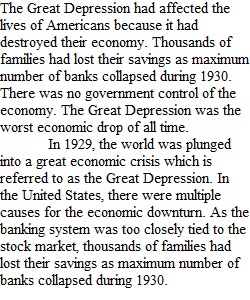


Q Overview: Throughout Modules Seven and Eight, you have continued to work on your Project 2: Historical Analysis Essay assignment, which you will formally submit for completion at the end of Module Eight of the course. This progress check assignment provides you with an important opportunity to get valuable instructor feedback on the progress you are making and to ensure you are on the right track for your later submission. Prompt: Module Seven: Thinking About History has considered how historians communicate their historical event’s complexity to a specific audience. Return to your submission for Progress Check 2 and add a paragraph describing the complexity of your chosen historical event. Review your final writing plan submission and reflect upon what you wrote previously about your essay’s intended audience and message. Implement revisions to make sure that your essay’s message is effective and tailored to your specific audience. Revisit Module Four: Communicating Historical Ideas, continued, learning block 4-2 in the webtext, if you need a refresher on communicating to your specific audience. Specifically, in this assignment, you will submit the following elements of your Project 2: Historical Analysis Essay for review by your instructor: In Module Seven: Thinking About History, learning block 7-3 (page 3) in the webtext, you worked toward the following elements: II. Body: You will use this section of your essay to provide further detail about your historical event while supporting the claim you made in your thesis statement. Make sure to cite your sources. Specifically, you should: A. Describe the causes of the historical event. In other words, what were the underlying factors that led to the historical event? Were there any immediate causes that precipitated the event? B. Illustrate the course of your historical event. In other words, tell the story or narrative of your event. Who were the important participants? What did they do? Why? How do the perspectives of the key participants differ? C. Describe the immediate and long-term consequences of the historical event for American society. In other words, how did the event impact American society? D. Discuss the historical evidence that supports your conclusions about the impact of the event on American society. Support your response with specific examples from your sources. In Module Seven: Thinking About History, learning block 7-3 (page 3) in the webtext, you completed the following element: V. Communicate your message in a way that is tailored to your specific audience. For instance, you could consider your vocabulary, your audience’s potential current knowledge of historical events, or lack thereof, and what is specifically important to the audience. Please note that the numbering included above directly aligns with the numbering of these elements as they are presented in the Project 2 Guidelines and Rubric. You will ultimately also need to include a conclusion and reference list and make sure you communicate your essay’s overall message in your final historical analysis essay, but you do not need to do so in this submission. You will be prompted to build upon this progress check submission to prepare your final historical analysis essay for submission in Module Eight. Rubric Guidelines for Submission: The Historical Analysis Essay Progress Check 3 must be submitted as a 1- to 3-page Microsoft Word document with double spacing, 12-point Times New Roman font, and one-inch margins. Follow the formatting of the example included in Module Three: Communicating Historical Ideas, learning block 3-4 (page 3) in the webtext and include identifying information (name, course code and title, assignment title, name of university, and date). Critical Elements Exemplary Proficient Needs Improvement Not Evident Value Body: Causes Meets “Proficient” criteria, and Describes the causes of Describes the causes of Does not describe the causes of 20 response demonstrates insight historical event, citing source(s) historical event, but with gaps historical event (0%) into key approaches to studying (75%) in detail, accuracy, clarity, or history (100%) citations (55%) Body: Course Meets “Proficient” criteria, and Illustrates course of historical Illustrates course of historical Does not illustrate course of 20 response demonstrates insight event, citing source(s) (75%) event, but with gaps in detail, historical event (0%) into key approaches to studying accuracy, clarity, or citations history (100%) (55%) Body: Consequences Meets “Proficient” criteria, and Describes immediate and long- Describes immediate and long- Does not describe immediate 20 response demonstrates insight term consequences of term consequences of and long-term consequences of into relationship between historical event for American historical event for American historical event for American historical event and American society, citing source(s) (75%) society, but with gaps in detail, society (0%) society (100%) accuracy, clarity, or citations (55%) Body: Evidence Meets “Proficient” criteria, and Discusses historical evidence Discusses historical evidence Does not discuss historical 20 response demonstrates strong that supports conclusions that supports conclusions evidence that supports understanding of how to use about impact of event on about impact of event on conclusions about impact of historical evidence in drawing American society, citing American society, but with gaps event on American society (0%) conclusions about the impact source(s) and providing specific in detail, support, or citations of historic events on American examples (75%) (55%) society (100%) Message Communicates message Communicates message to Does not communicate 10 effectively in a way that is audience, but communication message to audience (0%) tailored to specific audience is not effective or is not tailored (100%) to specific audience (75%) Articulation of Submission is free of errors Submission has no major errors Submission has major errors Submission has critical errors 10 Response related to citations, grammar, related to citations, grammar, related to citations, grammar, related to citations, grammar, spelling, syntax, and spelling, syntax, or organization spelling, syntax, or organization spelling, syntax, or organization organization and is presented (75%) that negatively impact that prevent understanding of in a professional and easy-to- readability and articulation of ideas (0%) read format (100%) main ideas (55%) Total 100%
View Related Questions